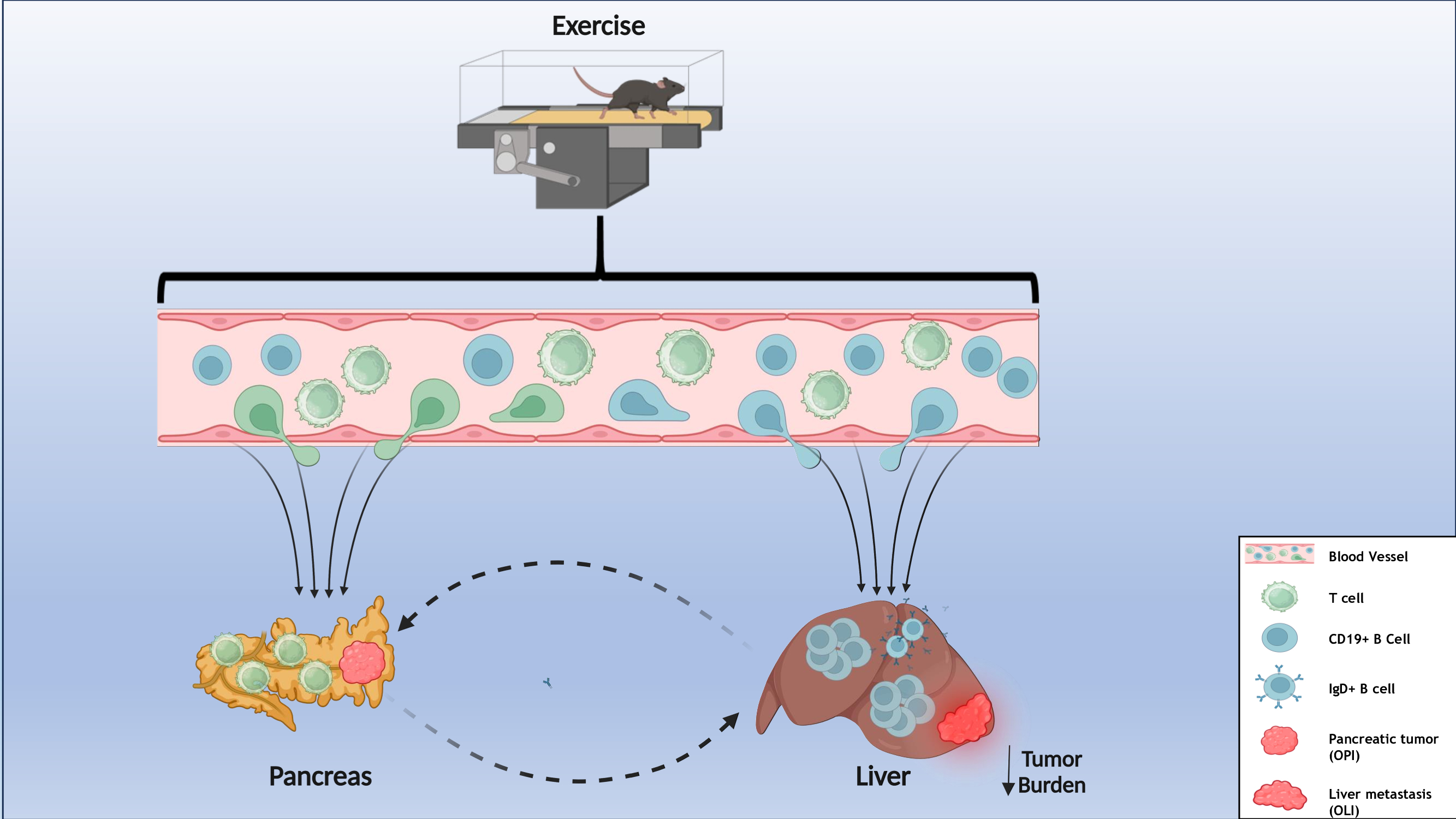Back to 2024 Abstracts
EXERCISE STIMULATES ANTITUMORAL IMMUNITY IN PANCREATIC DUCTAL ADENOCARCINOMA
Mansour E. Riachi
*1,2, Carolina G. Alcantara Hirsch
1,2, Anthony Sorrentino
1,2, Erica Ma
1, Beny Shapiro
1, Christopher L. Wolfgang
1,2, Dafna Bar-Sagi
1,21NYU Langone Health, New York, NY; 2New York University Grossman School of Medicine, New York, NY
Introduction:
The majority of pancreatic ductal adenocarcinoma (PDAC) patients are metastatic at presentation with limited treatment options and a poor overall 5-year survival of 3%. The liver is the predominant site of distant metastasis in PDAC. Our group has previously shown that aerobic exercise can inhibit tumorigenesis in a primary PDAC mouse model by promoting anti-tumor immunity, however, the effects of exercise in the metastatic setting have not been explored.
Methods:
We developed a model of PDAC liver metastasis by isolating primary pancreatic and liver metastatic cell lines (KPCT
pancreas or KPCT
liver, respectively) from 18–20-week-old LSL-KRas
G12D/+; LSL-Trp53
R172H/+; p48
Cre; Rosa26
LSL-tdTomato/+ mice. KPCT
pancreas cells were surgically implanted into the pancreata of syngeneic wild-type mice. One week after pancreatic implantation, KPCT
liver cells were implanted into the liver either by direct injection into the parenchyma or via the portal vein. The portal vein method enables us to account for the extravasation step of the metastatic cascade, while the direct parenchymal injection offers a less invasive surgery. Both methods allow for preservation of the spleen. Treadmill running was initiated in aerobic exercise cohorts 5 days per week for 2 weeks and the control mice were allowed to rest. Harvests were performed at day 21 post pancreatic implantation, and livers were flushed via cold 2% flow cytometry (FACS) solution to ensure organ specific immune findings on flow cytometry.
Results:
At end point analysis, the aerobic exercise group was found to have decreased tumor burden in both primary tumors and liver metastasis as measured by tumor weights and tdTomato fluorescence imaging compared to the rested controls. Immune profiling of the mouse livers revealed significantly elevated IL-15R+ CD8+ T cells as well as CD19+ B cells and IgD+CD27-CD1d- naïve B cells in the exercise cohort. While identification of IL-15R+ CD8+ T cells is consistent with the immune changes we have previously reported in the primary pancreatic tumor of exercised mice, the latter changes reveal an organ-specific immune cell recruitment that had not been observed before. Flow analysis of the mouse blood revealed an elevation in CD19+ B cells in the exercise cohort, suggesting both a systemic as well as an organ-specific modification in immune population that could be contributing to the decreased metastatic tumor burden in the liver.
Conclusion:
The combined immune profiling and phenotypic changes in the tumor bearing cohort suggest that aerobic exercise reduces PDAC liver metastatic outgrowth by modulating systemic and intra-tumoral immunity. The induction of an anti-tumorigenic immune response by aerobic exercise could open avenues for potential pharmacological intervention in downstream pathways to aid in the treatment of liver-metastatic PDAC.

Experimental design and graphical representation of resulting phenotype

Representation of flow cytometric analysis of murine liver, pancreas and blood samples
Back to 2024 Abstracts

